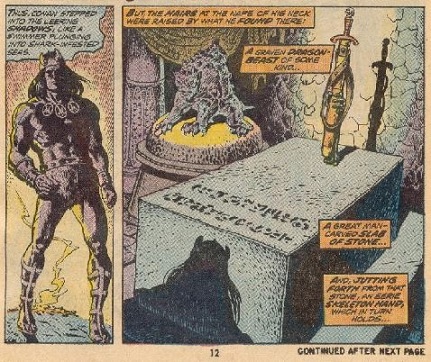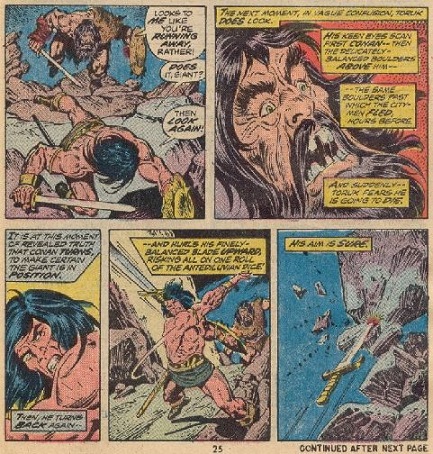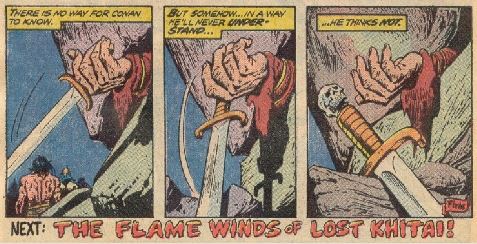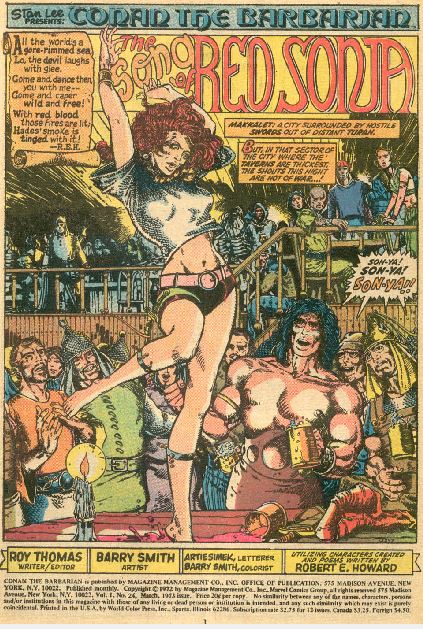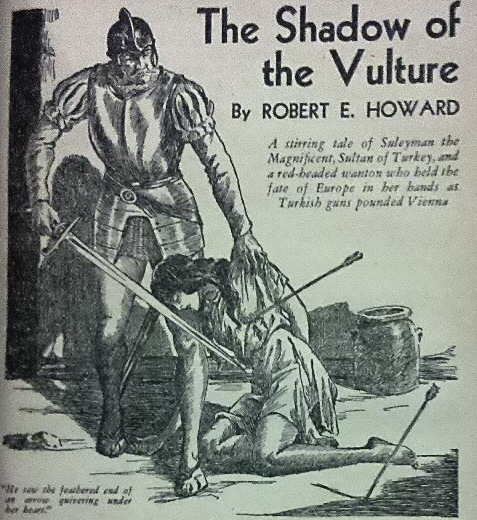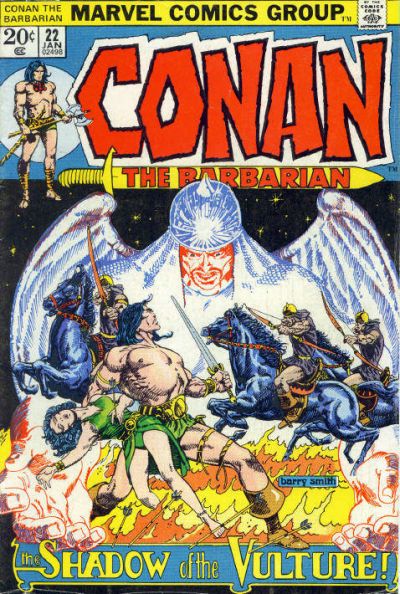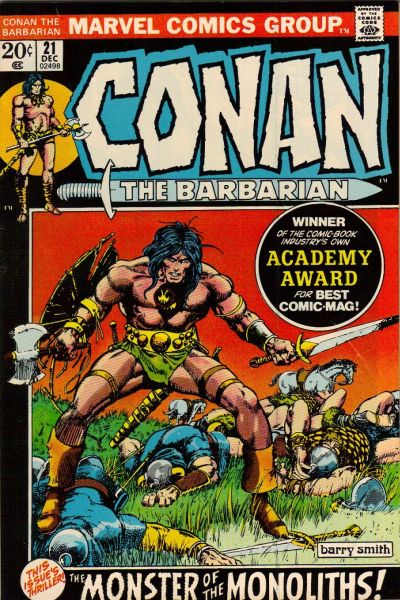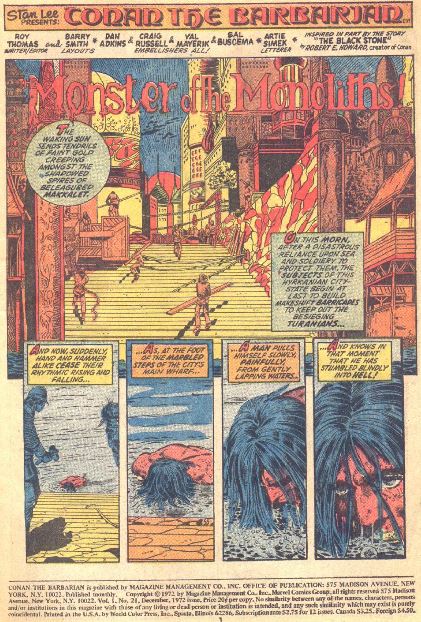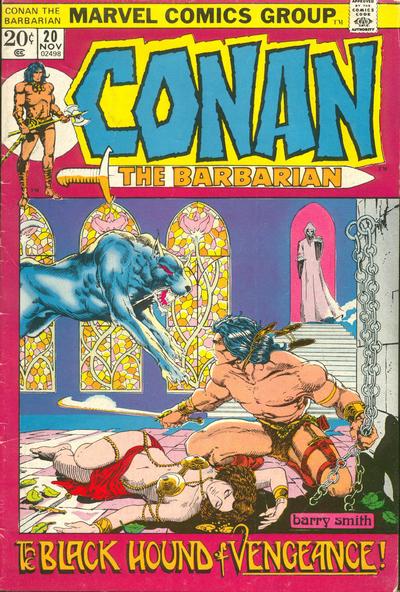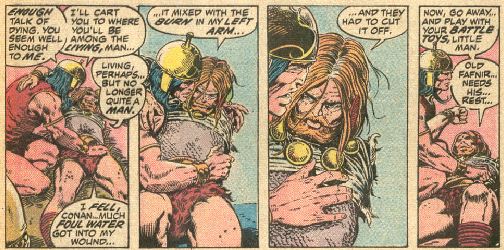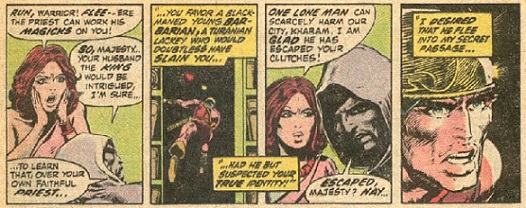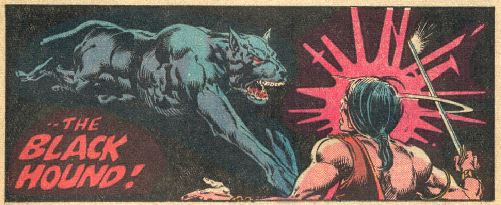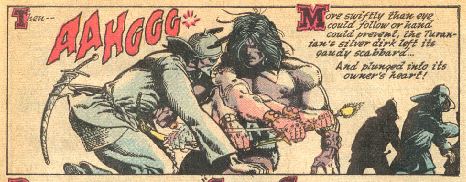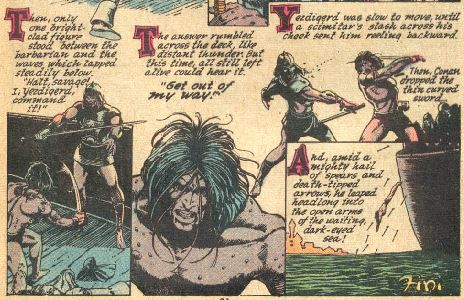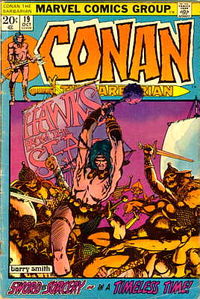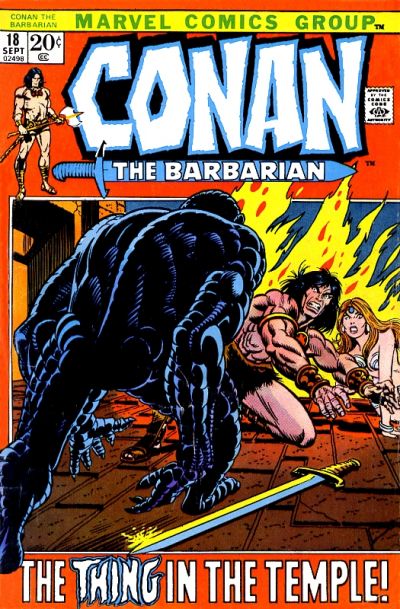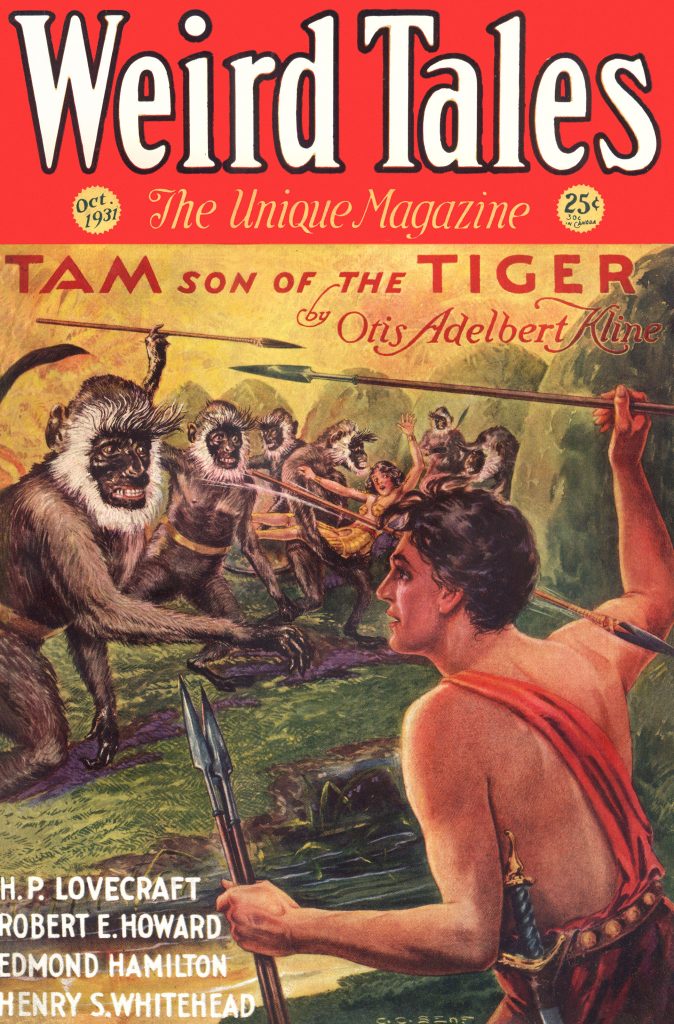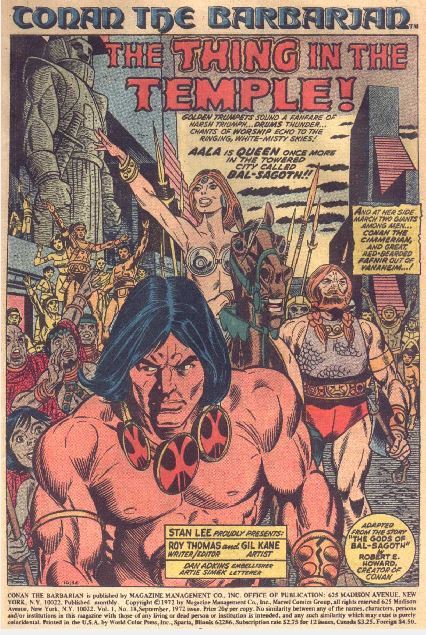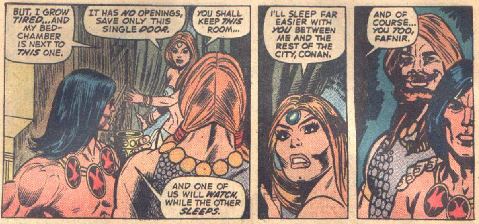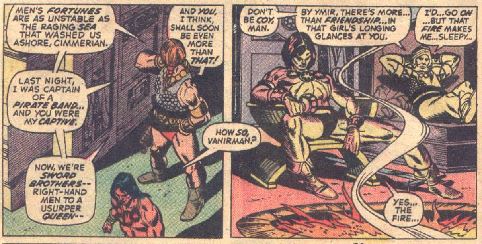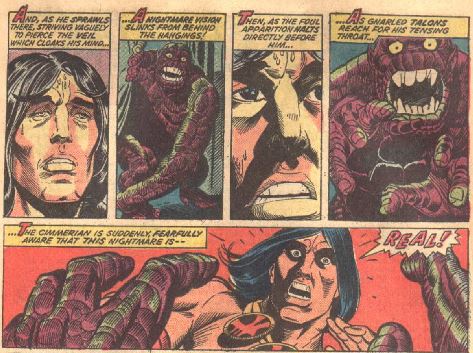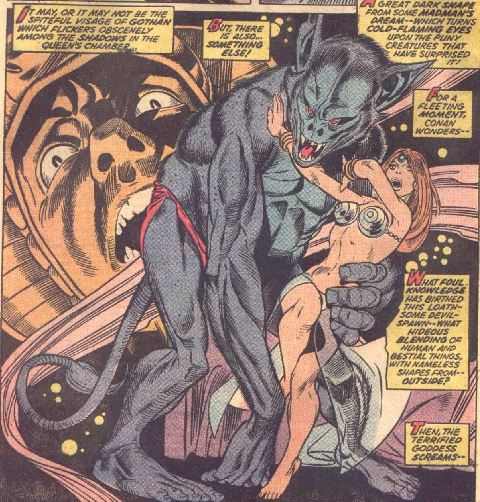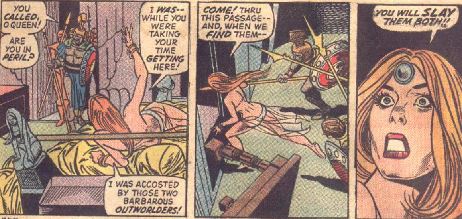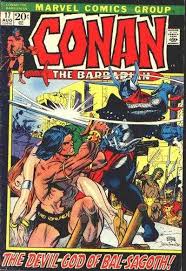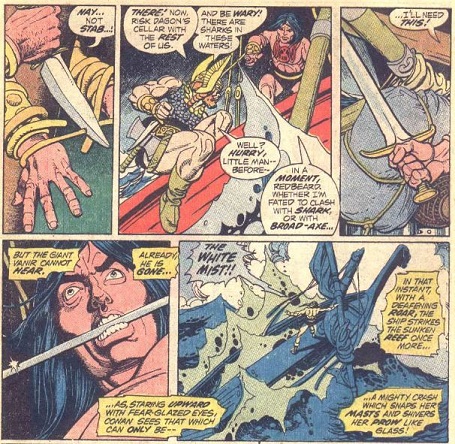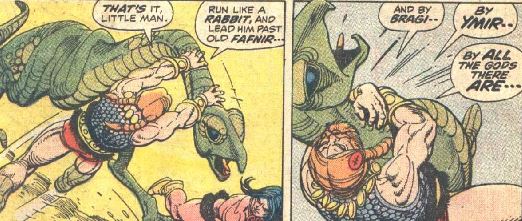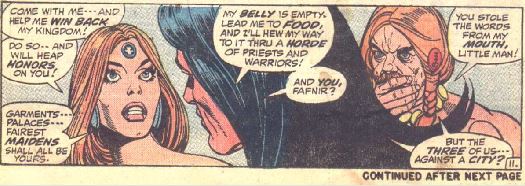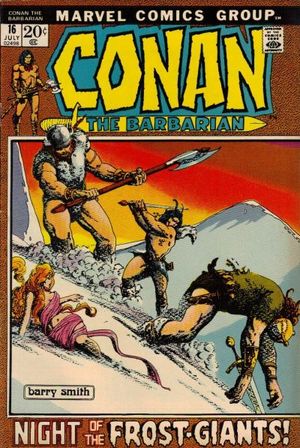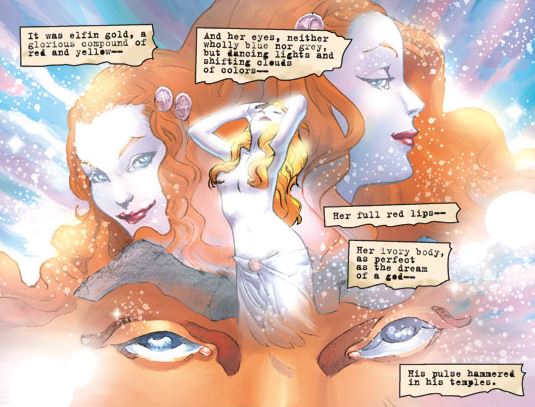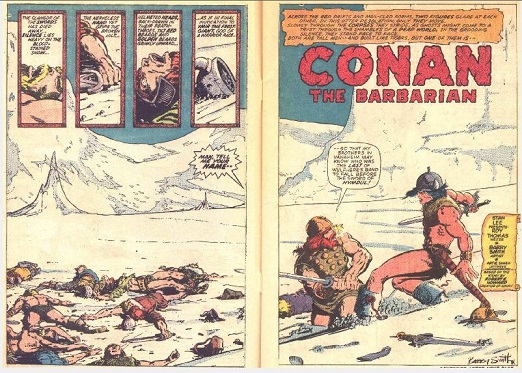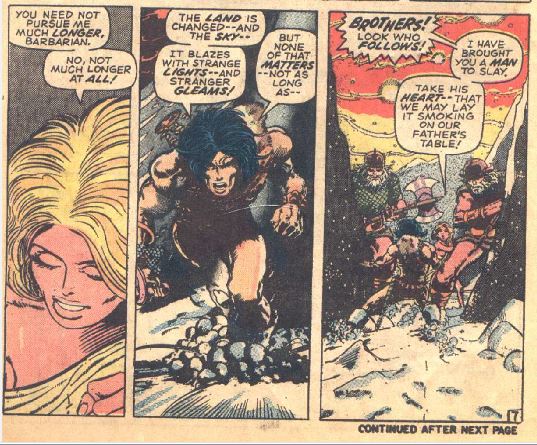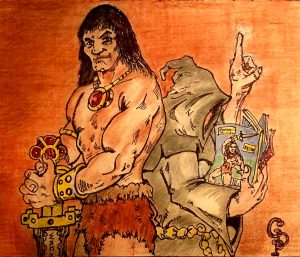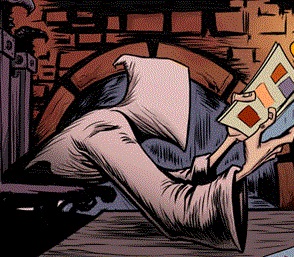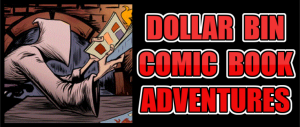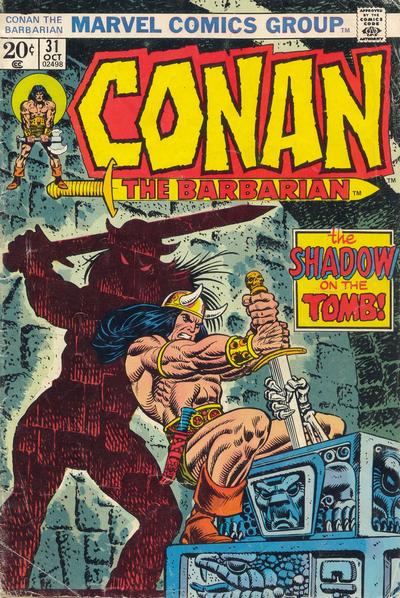 (EDITOR’S NOTE: Welcome to The Classic Conan Countdown, a series of reviews focusing on the original 275 issues of Marvel Comics’ Conan the Barbarian, which was published from 1970 to 1999. This is a review of Conan the Barbarian Vol. 1, #31. )
(EDITOR’S NOTE: Welcome to The Classic Conan Countdown, a series of reviews focusing on the original 275 issues of Marvel Comics’ Conan the Barbarian, which was published from 1970 to 1999. This is a review of Conan the Barbarian Vol. 1, #31. )
By DEAN PLAKAS – Paint Monk’s Library Writer
Set in a hilly, rocky countryside, we find Conan and the Turanian army, led by Captain Malthuz, ambushed by a local tribe of Hill-Men led by Hobar. Malthuz orders a hasty retreat to higher land, buying what’s left of his army and the Cimmerian some advantage.
In a foreshadow, Captain Malthuz is directed toward a delicately balanced rock formation for an escape route, but he points out that it’s too delicate a rock formation and that “one misstep” would cause the rocks to fall and bury them all.
Hobar of the Hill-Men proposes a challenge to Malthuz: champion versus champion to the death! If Hobar’s champion wins, the Turanian army dies. If he doesn’t, then they are free to leave unmolested. Malthuz senses Hobar is a man of honor and will keep his word, so Malthuz agrees to the terms. Malthus does, however, wish he had a magic sword to fight Hobar’s champion, a giant of a man named Toruk whom Malthuz will fight himself at the agreed upon time of sundown.
The comment Malthuz made about having a magic sword stirs memories in Conan from his youth. In a flashback, after running for his life and fighting a giant bear, Conan found an underground tomb. He came across a skeleton’s hand holding a skull-hilted magic sword protruding from “a giant man-carved slab of stone,” sort of like a landlubber’s version of The Lady of the Lake and Excalibur. Conan managed to pull the sword out of the skeleton’s hand only to discover evil magic attached to the weapon as he faced a frightening enemy – the giant shadow of Conan himself! Using light and fire, the Cimmerian managed to escape the tomb and decided not to keep the sword, throwing it back into “the gaping aperture for some less prudent soul to find…”
Conan doesn’t like the odds of Malthuz winning the battle, so the barbarian knocks him unconscious from behind. The reason is two-fold: Conan respects Malthuz, he might even like him, but more importantly Conan doesn’t want his fate in some one else’s hands. In a hard fought contest, Conan defeats the giant Toruk by positioning him under the aforementioned delicate rock formation and causing an avalanche of rocks by throwing his sword at it.
Between the flashback and the present story, writer Roy Thomas does a fine job by connecting the two into one. As Toruk dies, he releases his grip on his own sword – which turns out to be the skull-hilted blade Conan had thrown away in the flashback. As the Hill-Men depart, Conan walks away with the Turanians and with their lives intact, as promised by Hobar. Conan does not notice the blade leaving the hand of the dead giant, who turns out to be the “less prudent soul” he imagined in his youth when he tossed the sword back into the tomb. Just like when Conan fought his giant shadow for the magic sword and his life back then, he now fought for his life again against the same sword and left a giant in the shadows of his own tomb of fallen rock.
CAPSULE REVIEW: The cover is illustrated by two other artists from the Silver Age of comics – Gil Kane and John Romita. Kane drew Conan and Romita drew the shadow of Conan. Overall, it’s a fine cover, fully illustrated with marked texture but with a tight sense of spacing.
The splash page of this issue reminds me of the splash page of Conan the Barbarian #17, which is the issue with the title “The Gods of Bal-Sagoth,” illustrated by Gil Kane. It’s practically the same page, with bodies everywhere, the Turanians and Conan having to fight for their lives, this time together against the Hill-Men instead of each other. There’s even a face of a character at the bottom of the right hand corner calling for Conan’s death in both issues. In Conan the Barbarian #17, the character is referencing a battle axe. In this issue, the character is holding a battle axe.
Much of the lettering in captions is not needed for the flashback sequence, as John Buscema does a fantastic job telling an action packed story through his pencils alone. You’ll note that Buscema even draws a thinner Conan with the necklace and horned helmet that former Conan artist Barry Windsor-Smith orginally drew. It’s these subtle visual things that give the comic book the edge over a novella. Although…the homage to Smith would have been more apparent and complete had Ernie Chua (Chan) used finer inks and Glynis Wein used pastel colors in the flashback.
My final comment is also with regard to the lettering, in particular to the typo on page five. Captain Malthuz whispers, “Thouugh were you raised” it should be “Though where you raised.” I don’t mean to be picky, but his comment made no sense whatsoever until I realized it was a typographical error.
Lots of action, a well-structured story, great art, and even a tribute to Barry Windsor-Smith’s Conan from John Buscema. On a scale of 1-10, I’d rate this issue a 9 (see our rating and review standards here.) On eBay, ungraded copies are available (depending on condition) for between $3-$15.
“And this story shall also be told.” – The Wizard in Conan the Barbarian

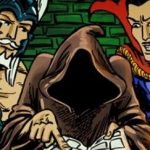
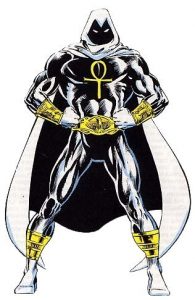

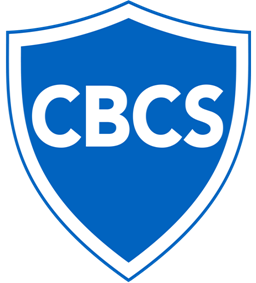
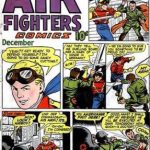

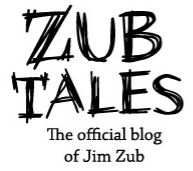

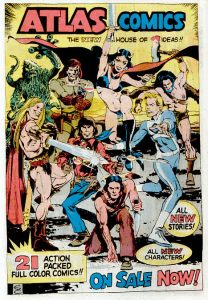

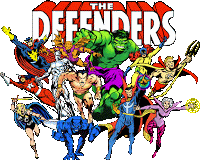
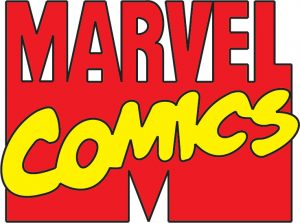

 June 18th, 2018
June 18th, 2018 


